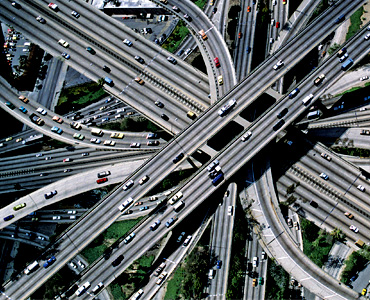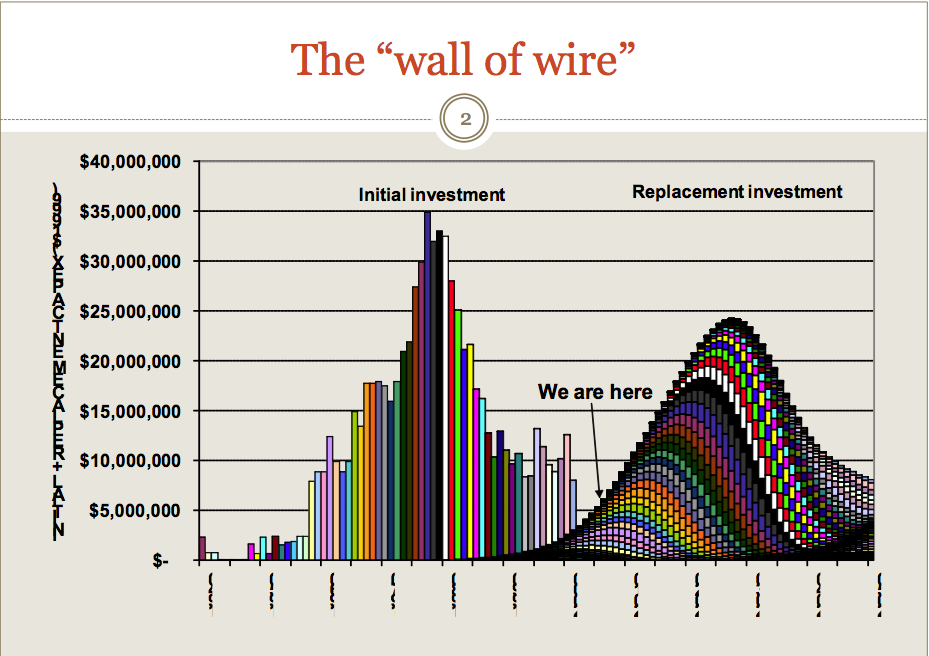
Recent media interest in the issue of gold-plating electricity infrastructure signals that it is an important time to take a step back – to take an objective look at the history and known economic issues surrounding infrastructure provision, and particularly the private versus public infrastructure debate. These issues are also relevant for the debate about the NBN.
As a background, I have worked previously in rail regulation and the assessment of infrastructure investment by local governments in Queensland, so I hope that I can bring a practical as well as theoretical perspective.
First, one must consider the historical reasons for the existence of State or private network monopolies in the first place?
1. Mergers and economies of scale of private enterprise
2. Government development for its own needs (including defence)
3. Government intervention due to natural monopoly features (either too high risk for private enterprise or too much scope for price gouging)
4. Government intervention due to positive externalities (for example, cleanliness and health benefits of sewerage)
5. Government intervention due to fairness and equitable access – once a technology becomes a necessity it is politically expedient to promote fair access (including regional development)
While many may disagree that government involvement in some infrastructure networks was necessary from the start, citing the textbook benefits of the profit maximising natural monopolist, one must be much more stringent about assessing the characteristic of actual successes an failures of government versus private infrastructure, and the critical ingredients that contribute to a failure of either type of provision.
Historically, with the advent of new technology, government will typically step in if it sees benefits to centralisation – creating an entity tasked with equitable provision of the new service. Prior to centralised water and sewerage in cities each property owner would have had a rainwater tank, bore or well to supply water, and a thunderbox for waste. Health benefits of newly designed reticulated sewerage systems were overwhelming (although it took some time before waste was treated in any fashion before being dumped into waterways). Private investment in sewerage reticulation could only recover cost from those who accessed the system yet the social benefits were much broader. A government established (and subsidised) monopoly was the only way to go.
These examples confirm points 2-4 above. While a private enterprise could have undertaken sewerage works, there were positive externalities, and issues of equitable access. Furthermore, a private company still faced competition from existing basic methods of treating waste and capturing water supply.
Electricity generation was originally the domain of manufacturers who generated and used their own power onsite. With the wide acceptance of Tesla’s AC power, which could be sent vast distances with greatly reduced losses, the centralisation of electricity began. In this industry economies of scale were so great that governments typically took control of all generation and distribution to reduce costs. Ironically, we now believe that competition will in fact reduce costs and subsequently consumer electricity prices. Clearly, we need to understand the subtleties in the coordination of supply, transmission and demand management to create market structures that incentivise beneficial coordination regardless of the owner of each network component.
The history of water supply in Britain follows a similar pattern, with government intervening in the 1860s to take ownership of the private supply market due to massive inefficiencies from infrastructure duplication required for competition (water in 1851 was about 60% privately supplied). The costs from these inefficiencies were hindering uptake of reticulated water which proved to have external benefits of improved sanitation and health in the cities. Much of the water industry was then reprivatised in 1989.
The unfortunate part of these stories is that once an industry is in the hand of a government entity, there is no risk and therefore no incentive to innovate. Rather than showing the willpower or managerial nous to provide incentives to reduce price and improve service provision of its own monopoly, governments often decide that private markets are the preferred way to improve efficiency of network service provision, regardless of the appropriateness of that choice. To maximise social benefits the government is now required to properly regulate a market of smart, influential, profit seeking firms, instead of properly regulating or managing its own monopoly in the public interest. While I am generally pro-competition, one wonders if those in charge of competition reform and privatisation appreciate that they have simply substituted one management problem for another.
In somewhat of a return to the past, the federal government is now keen on subsidising the rollout of a fibre broadband network. The justification for government provision is the same –characteristics of natural monopoly, positive externalities of information access, and fairness of access. This is perfectly in keeping with the theory and evidence discussed above. It seems we have come full circle, and I have commented before that this is more a result of economic fads than objective assessment of the incentives and coordination problems faced in each network.
The turning of the tide against privatization predated the financial crisis. Internationally, a number of major privatizations have been reversed. The UK government was forced to renationalize its rail network after the failure of the privately owned operator. In Australia, dissatisfaction with the privatized telecommunications monopoly has led the government to announce that it will get back into the telecommunications business by constructing a publicly-owned national broadband network. New Zealand, where market liberalism was implemented in a radical form in the 1980s and 1990s, renationalized its national airline in 2001 and its railways a couple of years later. And even relabeled as “choice”, Social Security privatization proved so politically unsaleable that it was abandoned early in Bush’s second term.
We must also consider, in light of recent price increases in electricity in particular, the wall of wire effect from ageing infrastructure, and legacy of the actual history of infrastructure investment. When networks are rolled out in a short period of time the likelihood of replacement for each component increases in unison, leading to a second wave of infrastructure upgrades. When costs are being recovered through user prices, these necessarily lead to short term price increases.

There are two issues with gold-plating. The first has to do with the standards expected of the network – the probability of black-outs, for example. Or in road networks, lighting, guardrails, durability to handle expected axel loads, and the probability of flooding, are all service standards. The service standards for electricity networks in most States have been iteratively improved at the same time as the wall of wire has been emerging. Thus, we are seeing a short term abnormally high degree of investment in these networks after a period of abnormally low investment.
The second issue is the pattern of the next wave of infrastructure replacement. A more durable ‘gold-plated’ network may face a much flatter wall of wire in the next wave of capital replacement and see lower, more incremental price increases in the long run.
One could argue that regardless of the private versus public provision of electricity networks, a properly functioning network owner would be making these investments.
Clearly, there is no right or wrong in the public versus private infrastructure debate. A history littered with attempts at both privatisation and nationalisation have given regulators plenty of trail-and-error lessons. Ultimately, there are the simple practicalities to consider in the choice of provision, including the important externalities from such networks. There is no right or wrong.
Tips, suggestions, comments and requests to [email protected] + follow me on Twitter @rumplestatskin